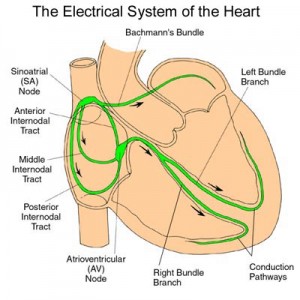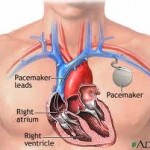Myotonic Dystrophy patients have a shorter lifespan according to this study from 2016. A comprehensive review shows an average age of death at about 60 years. Lung issues and Heart Issues are the major casues of death. Sudden cardiac failure occurs in 27% of patients.
Abstract
Background: There is limited data on the causes and predictors of mortality in patients (pts) with myotonic dystrophy type 1 (DM1) evaluated and treated with modern medical therapy in the U.S. Objective: To determine the epidemiology of mortality in U.S. patients with DM1. Methods: Analysis from a U.S. registry with clinically- and genetically-verified adult DM1 pts (age at entry≥18 yrs) enrolled at MDA clinics (1997-2005) and prospectively followed (study entry-N=406; age: 42±12 yrs; male: 205 (50.5[percnt]); CTG repeats: 629±386; muscular impairment rating score (MIRS): 3.2±1.0). Causes of death were adjudicated by death certificate and medical records review. Results: By last follow-up (11.2±4.2 yrs), 170 (41.9[percnt]) of pts had died with a median age at death of 55.4 yrs. Causes of death in the 170 pts were respiratory failure (90, 52.9[percnt]), sudden unexpected possibly cardiac (47, 27.6[percnt]), non-sudden cardiac (8, 4.7[percnt]), non-sudden other (21, 12.4[percnt]), and uncertain cause (4, 2.4[percnt]). The median survival age was 60.5 yrs. Study entry characteristics predicting all-cause mortality using survival analysis included age (per decile, RR 1.5; 95[percnt] CI 1.3-1.7, p<0.001), MIRS (per 1-level increase, RR 1.7; 95[percnt] CI 1.5-2.1, p<0.001), CTG repeat length (per1-log increase, RR 1.9; 95[percnt] CI 1.2-3.0, p=0.006), cardiac diagnoses (if present, RR 2.7; 95[percnt] CI 2.0-3.7, p<0.001), and an abnormal EKG (if present, RR 2.4; 95[percnt] CI 1.7-3.3, p<0.001). Conclusions: Despite modern therapy, adult DM1 pts in the U.S. have a shortened lifespan. The most common causes of death are respiratory failure followed by cardiac causes. Predictors of death include older age, worsened muscular disability, greater CTG repeat length, and presence of cardiac issues either a diagnoses or abnormal EKG. Study Supported by: Research grant with Biogen, Inc. and Isis pharmaceuticals
Disclosure: Dr. Duda has nothing to disclose. Dr. Venkatesh has nothing to disclose. Dr. Groh has received personal compensation for activities with Isis Pharmaceuticals.



